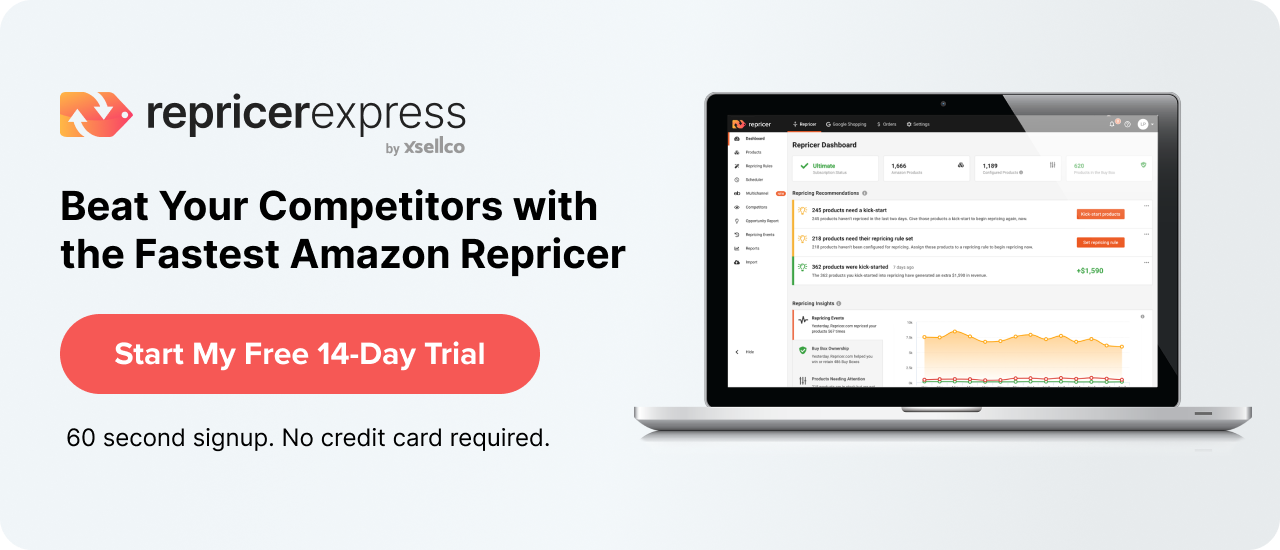We’ve written a post before that dealt with deciding how to narrow down your ecommerce focus, but what about specific products? While you may have chosen to sell clothing, books, birdhouses, settees or anything else, you still have to know which products exactly are going to line your digital shelves. Luckily, RepricerExpress has some top tips for all you third party sellers — testing the viability of your Amazon product ideas has never been easier.
Research How In Demand Your Product Idea Actually Is
This is probably the most obvious idea of checking for how well your product idea will work, as you want to make sure you’ll be stocking a product that will actually sell. Google Trends is an excellent place to go to compare trending products; although you can only compare five products at a time, it’s easy enough to re-compare products once you’ve determined what the winners are. Further, you can check how they’ve been trending over annual periods, giving you a long-term idea of products’ growth or decline.
Look at Size and Demand
As we well know from how things can trend on Twitter, how popular a certain product is doesn’t always correlate to how big the market space for it is. For example, the NBA is currently one of the hottest topics because of Donald Sterling’s comments, but it’s not entirely practical to load up your inventory with basketball teams. Along with trending patterns, it’s just as important to understand if there’s a sizeable market and demand for your product.
What are Your Competitors Selling?
At first glance, offering merchandise that your competitors are selling seems like a recipe for getting squeezed out before you’ve begun. After all, why tap into a market that’s saturated with Product X when it seems like a better idea to branch out where there are no competitors to take your customers away?
The answer is an existing market. Your competitors have shown that there’s already a big appetite for Product X, doing the dirty work for you so all you have to do is market yourself as the best choice available. You don’t have to convince people there’s a need for Product X, let alone do the analytics to figure out that’s what they need; you just have to stock your inventory with Product X, get the word out and keep your prices competitive continually.
Examine Your Keywords
While keywords won’t automatically tell if you if Product X will be a surefire winner, they do point towards what shoppers are searching for. Say you’re selling shoes. People always need shoes, but what kind? If your Google As search turns up “black trainers” five times more often than “sparkly green pumps”, you have a pretty good idea of just what kind of shoes you should be selling.
Another thing to keep in mind is to avoid searching for one keyword at a time, such as just entering in “shoes” or “books”. Of course, these are going to be good sellers, but it tells you absolutely nothing about what kind of shoes and books people are looking for.
One last tip to remember is that higher searches also tend to have higher competition, so amend your ecommerce plan accordingly to deal with the stiffer market.
Who’s Interested?
Whatever products you decide on, you’ll need to know who the audience is. Baffle box-quilted down coats are a hot commodity in parts of the world where there’s a definite winter season, but you have to use their “language” to market accordingly. There’s no sense in using Louisiana patois or California surfer slang in your product listings because those are absolutely the wrong markets to target.
For this, you can look to a variety of sources: Google Trends, Twitter, Facebook, Alexa, Compete or Quantcast. And if it seems like too much work for you, just take a second and think back to every piece of mail or email you’ve ever received that clearly wasn’t marketed for you: how many nanoseconds did it take you to throw it out, and do you want your potential customers to do the same?
Final Thoughts
Once you’ve nailed all these steps in testing the viability of a product idea, the next step is to make sure it’s priced correctly every second of every day. RepricerExpress will help you do that by giving you a sophisticated repricing solution that’s super easy to use, and a 15-day free trial to help you get used to a better way of working.






